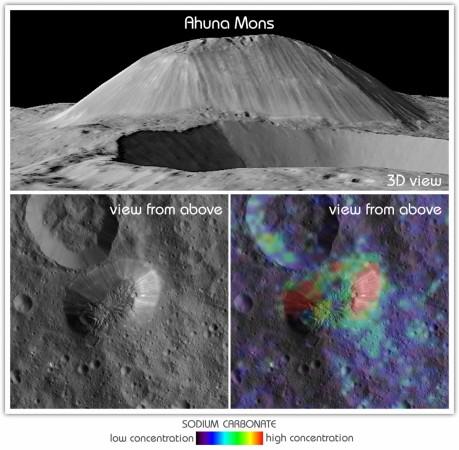
NASA's Dawn mission has detected noticeable changes and variations on the surface of the dwarf planet Ceres.
It is the only recognized dwarf planet in the inner Solar System, and it is has been found to be a lot more dynamic than once believed, reports the space agency. Recently exposed deposits on the surface of Ceres has brought up new information on the materials in its crust and details as to how it is changing.
These observations have been made by Dawn's onboard visible and infrared mapping spectrometer (VIR), according to the report. It was this device that was able to identify vast deposits of water on the surface of Ceres. Now, the recent findings include abundant ice found deposited on the northern wall of the Juling crater- a crater that is about 20 km in diameter.
"This is the first direct detection of change on the surface of Ceres," said Andrea Raponi of the Institute of Astrophysics and Planetary Science in Rome, who led the study.
"The combination of Ceres moving closer to the sun in its orbit, along with seasonal change, triggers the release of water vapor from the subsurface, which then condenses on the cold crater wall. This causes an increase in the amount of exposed ice. The warming might also cause landslides on the crater walls that expose fresh ice patches," she explained.
Dawn creates a comprehensive view of the dwarf planet by combining geophysical, chemical, and geological observations. They have found that Ceres has a crust that is about 40 km thick with water, salts, and possibly organic material.
The study also gained fresh insights into the dwarf planet's inner crust because of newly exposed material which suggests recent surface changes, notes the report.
Another breakthrough was finding hydrated carbonate. This is the first time that hydrated carbonates have been found on any planet in the Solar System outside of Earth, reports NASA. Around 12 sites on Ceres were found to be rich in sodium carbonates within a few square km of where water is part of these carbonate structures. This finding has opened up new information on the chemical evolution of the planet.
Because water is not stable on the surface of Ceres unless it is hidden, "This implies that the sites rich in hydrated carbonates have been exposed due to recent activity on the surface," said Giacomo Carrozzo of the Institute of Astrophysics and Planetary Science.


















